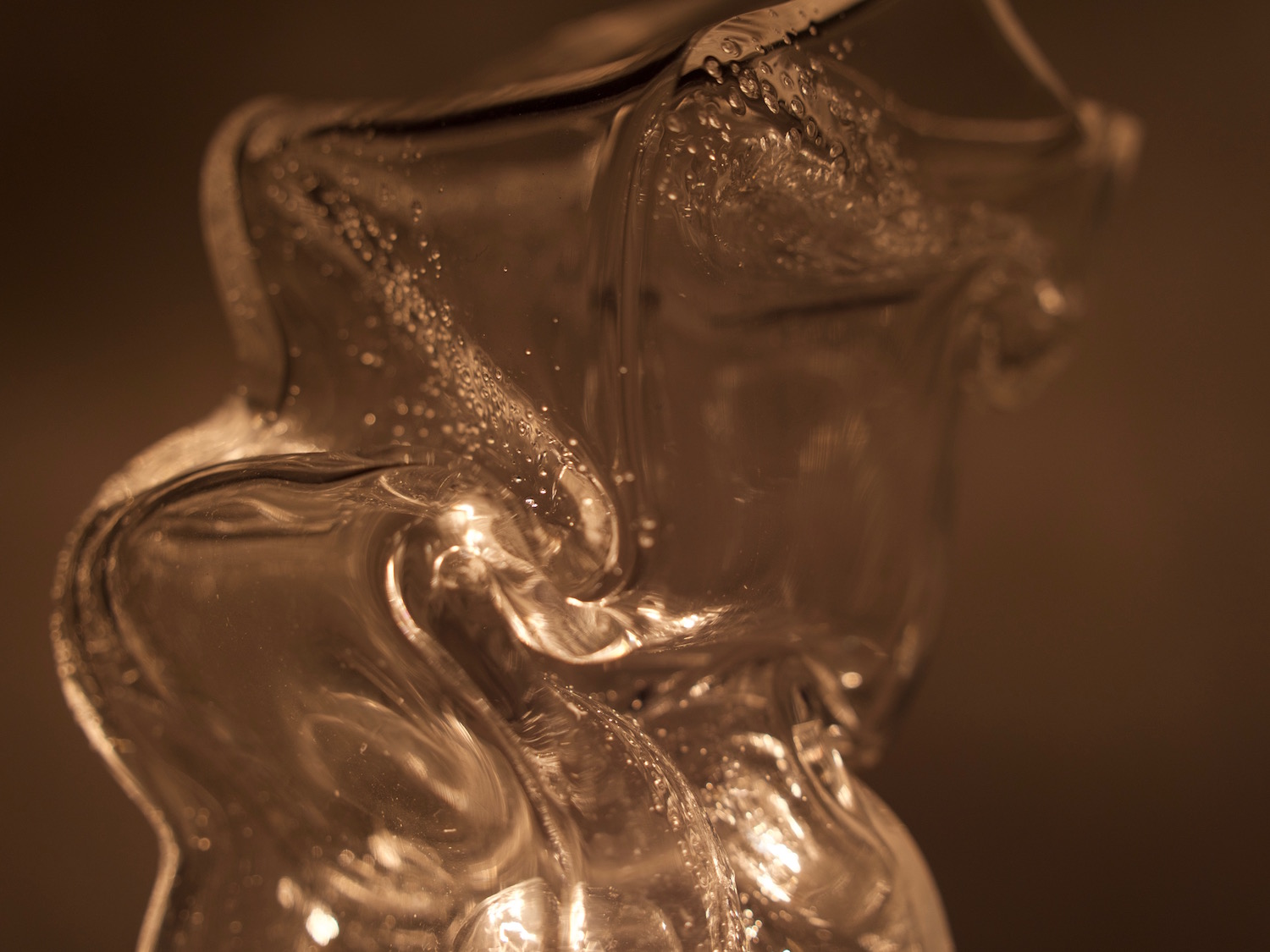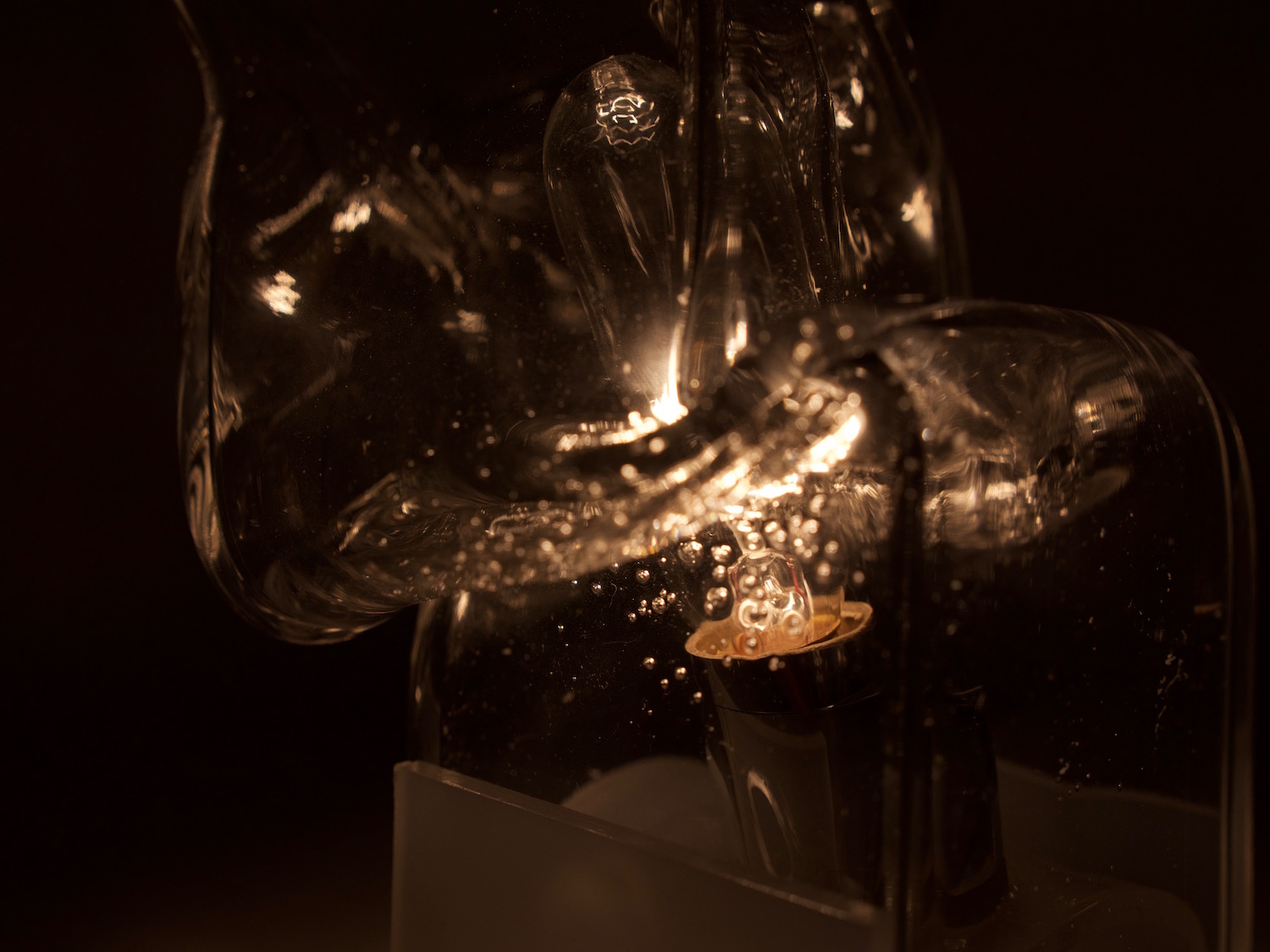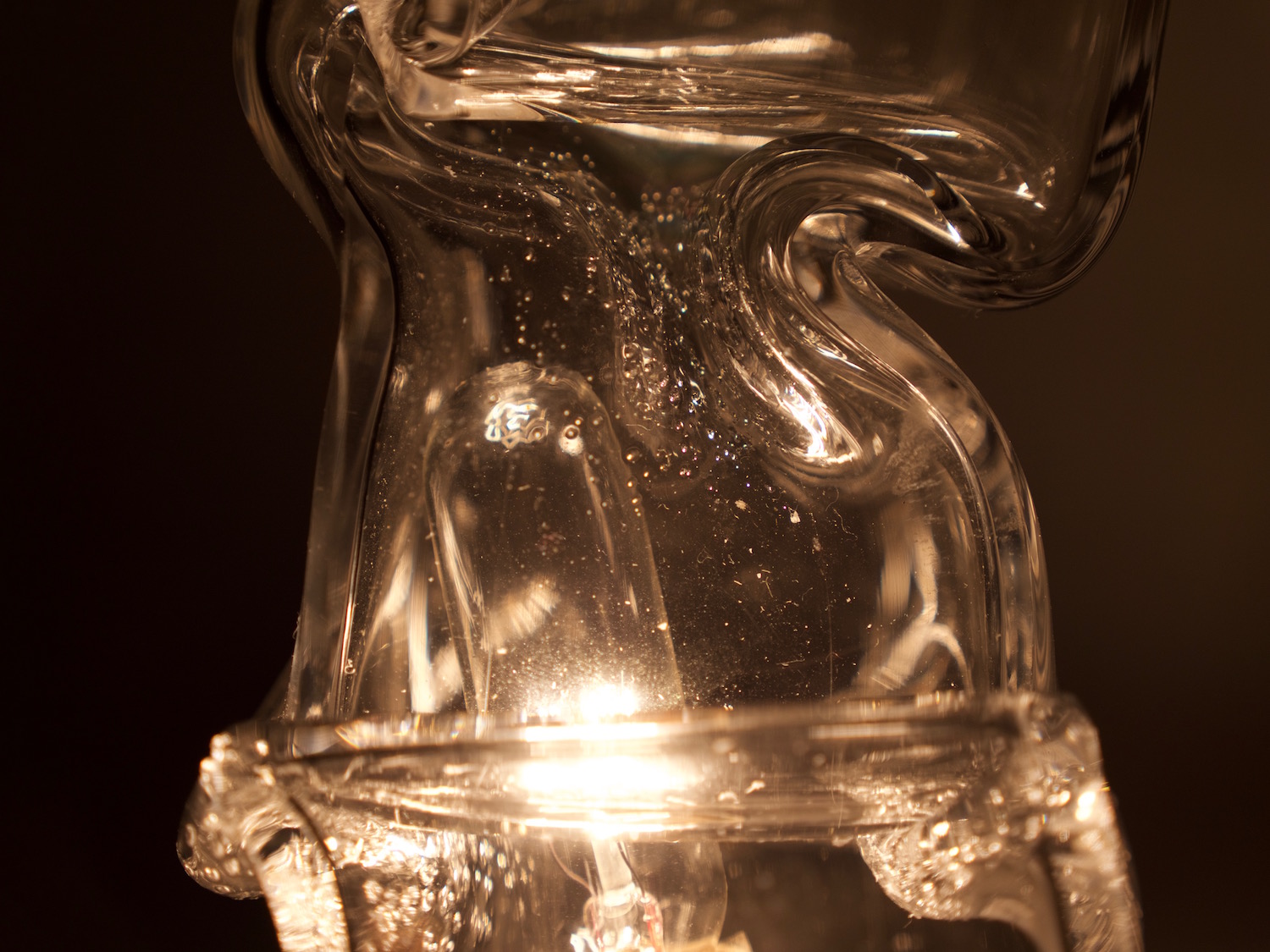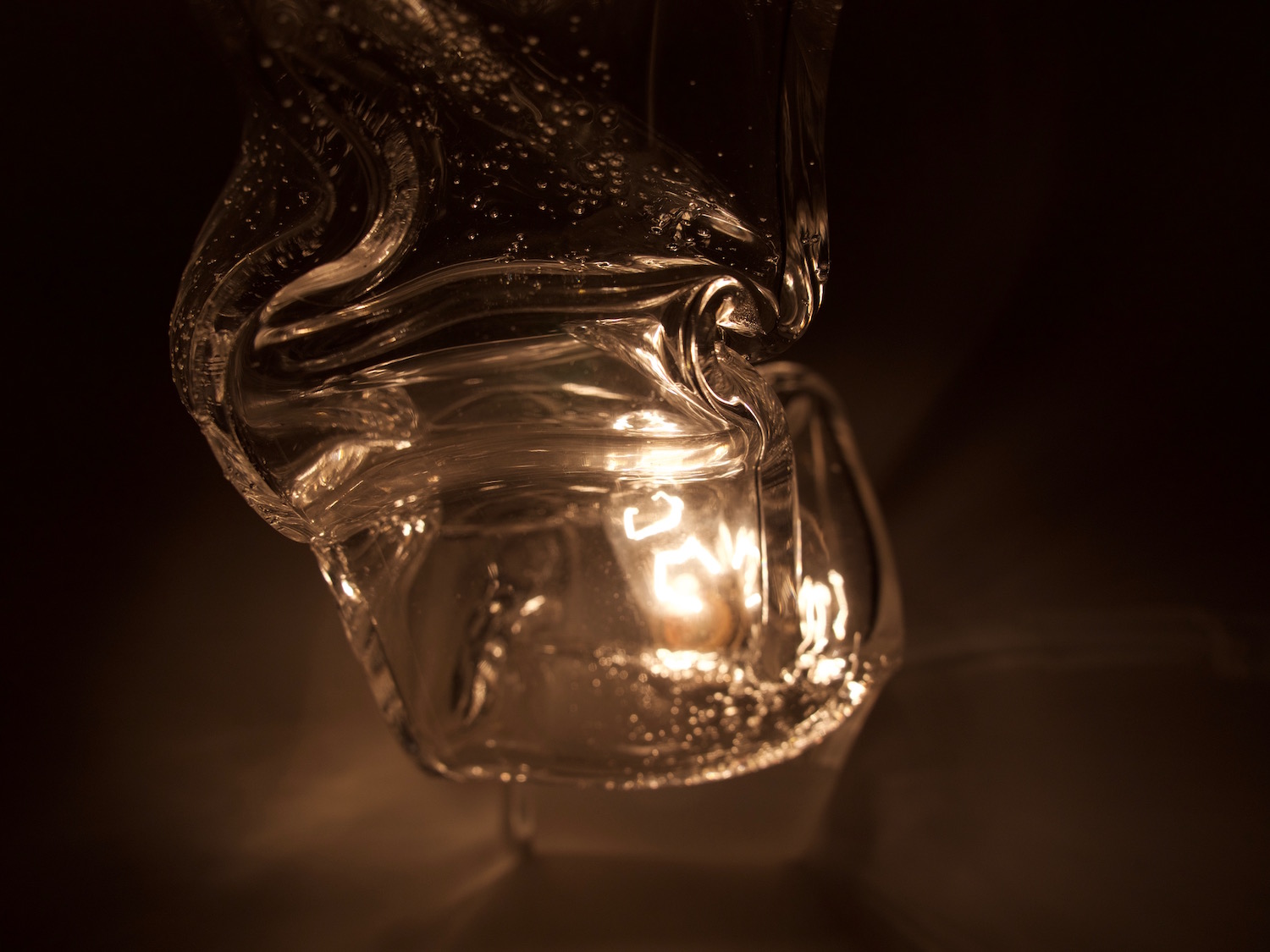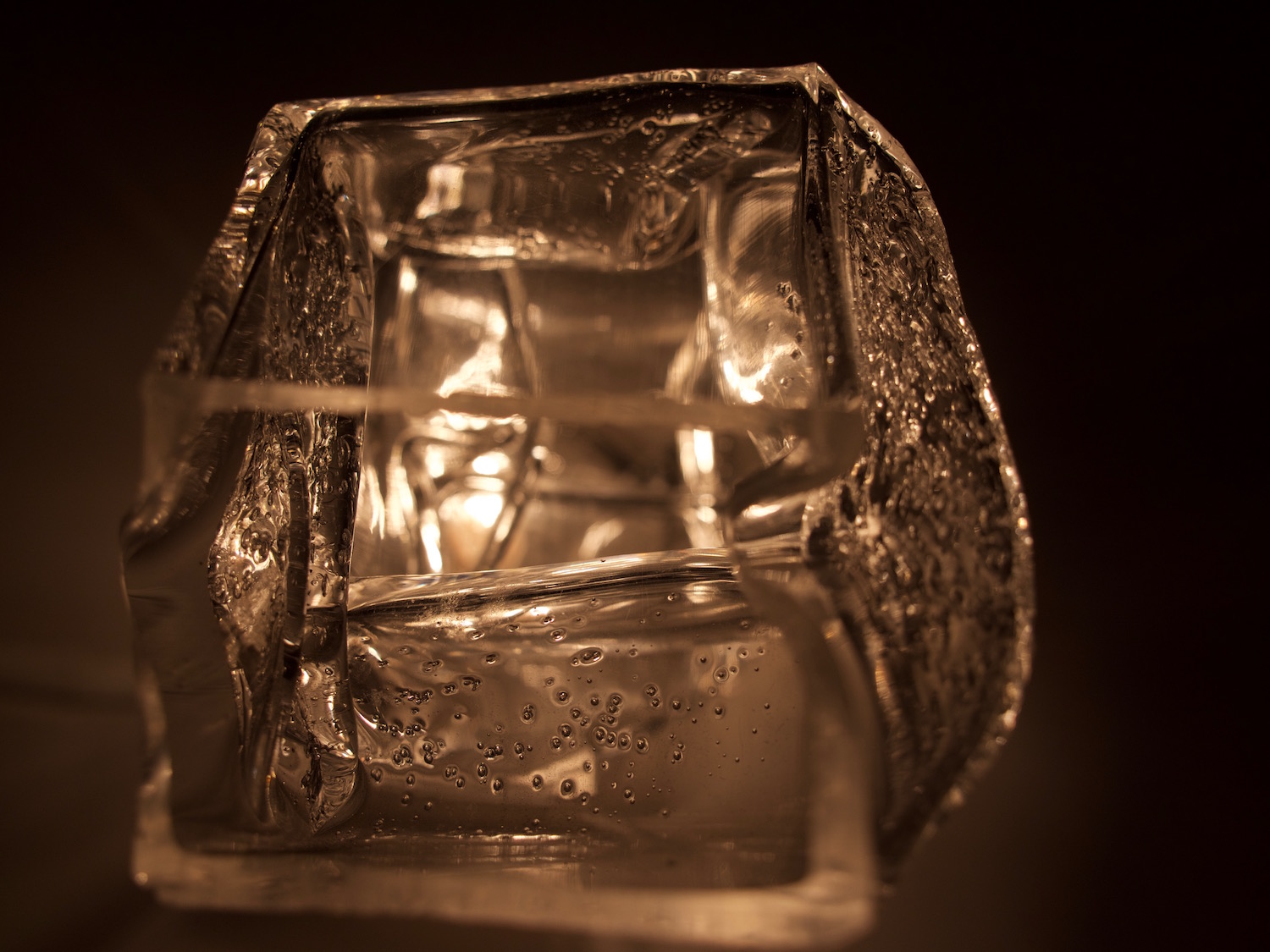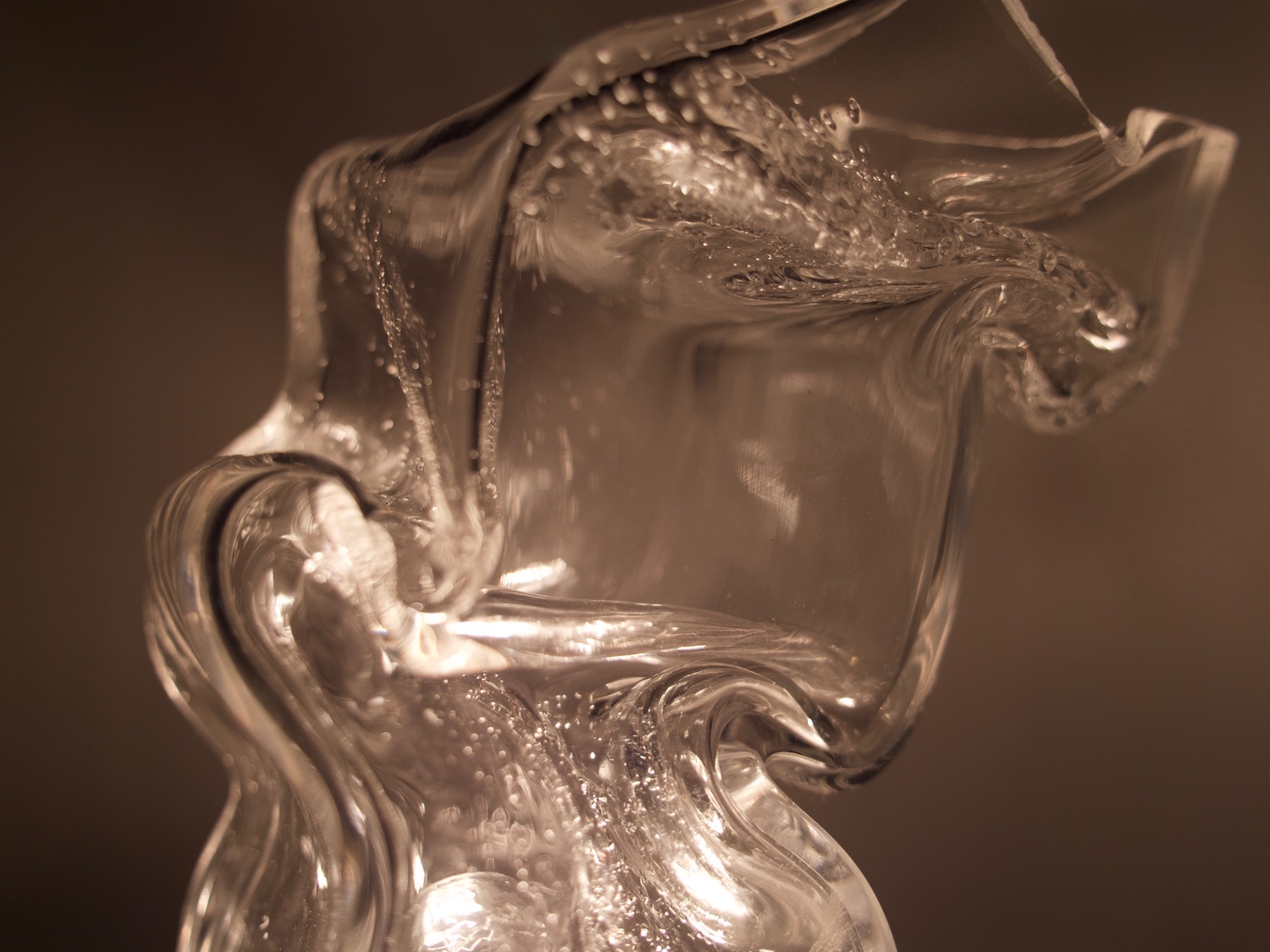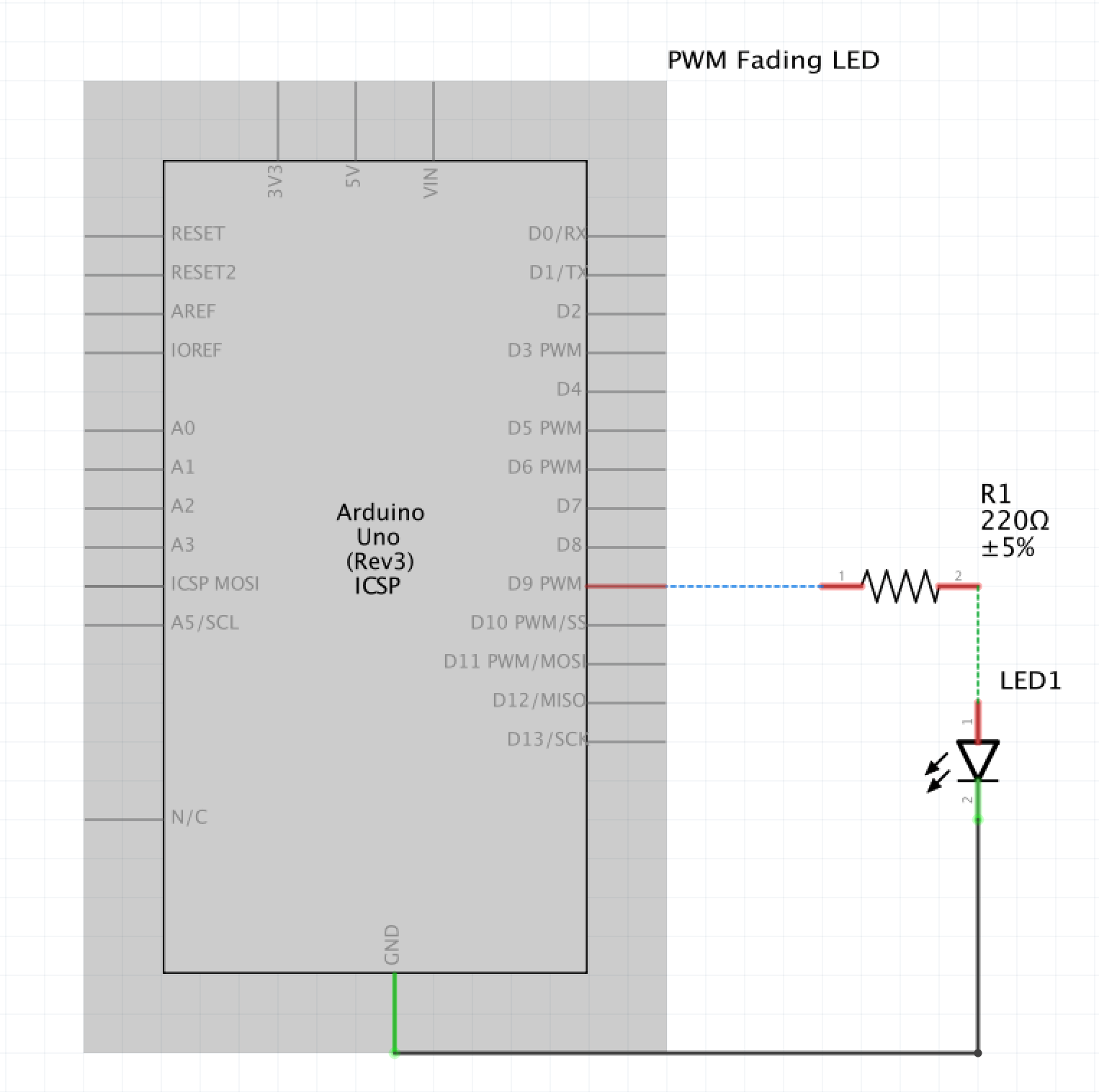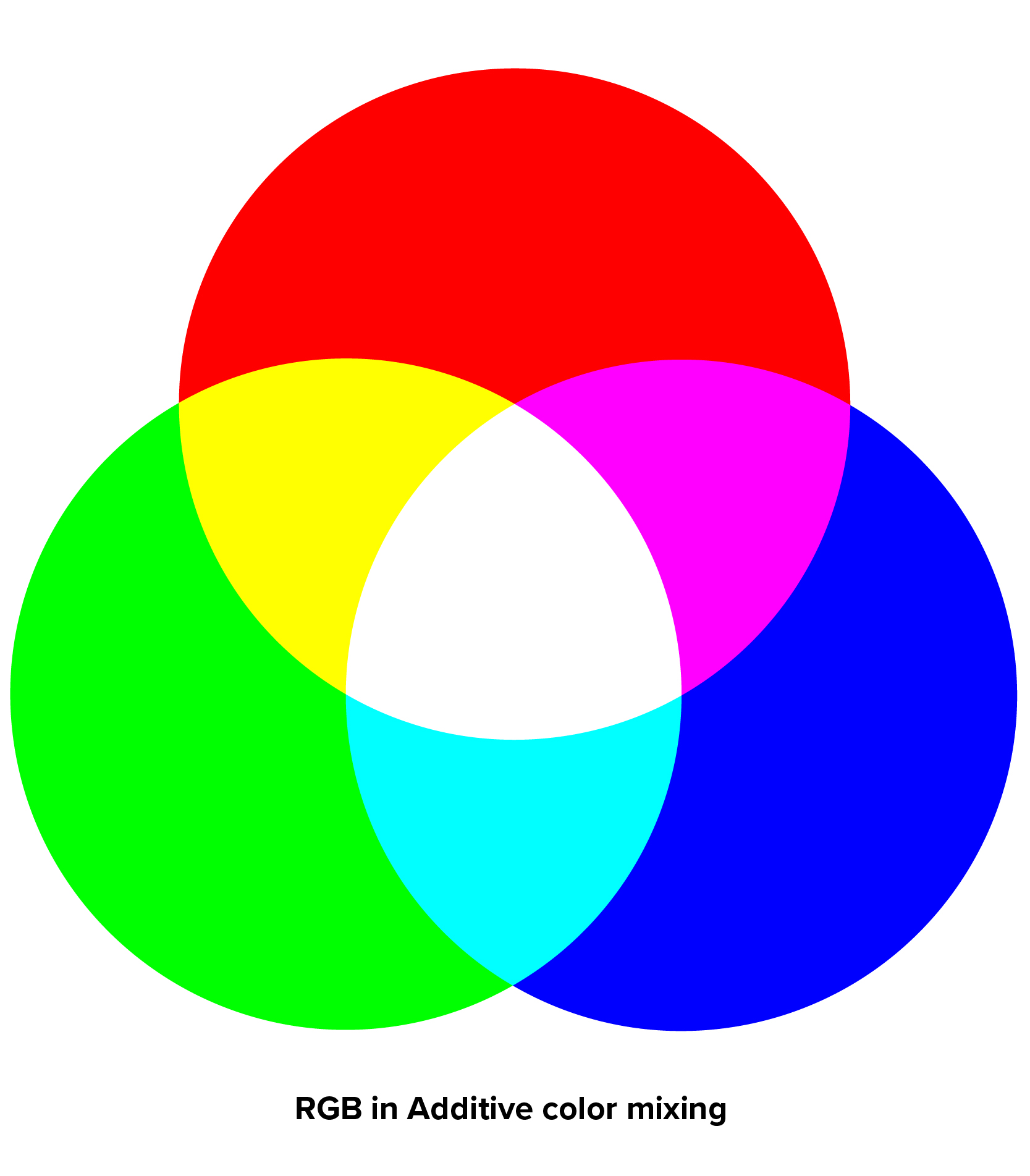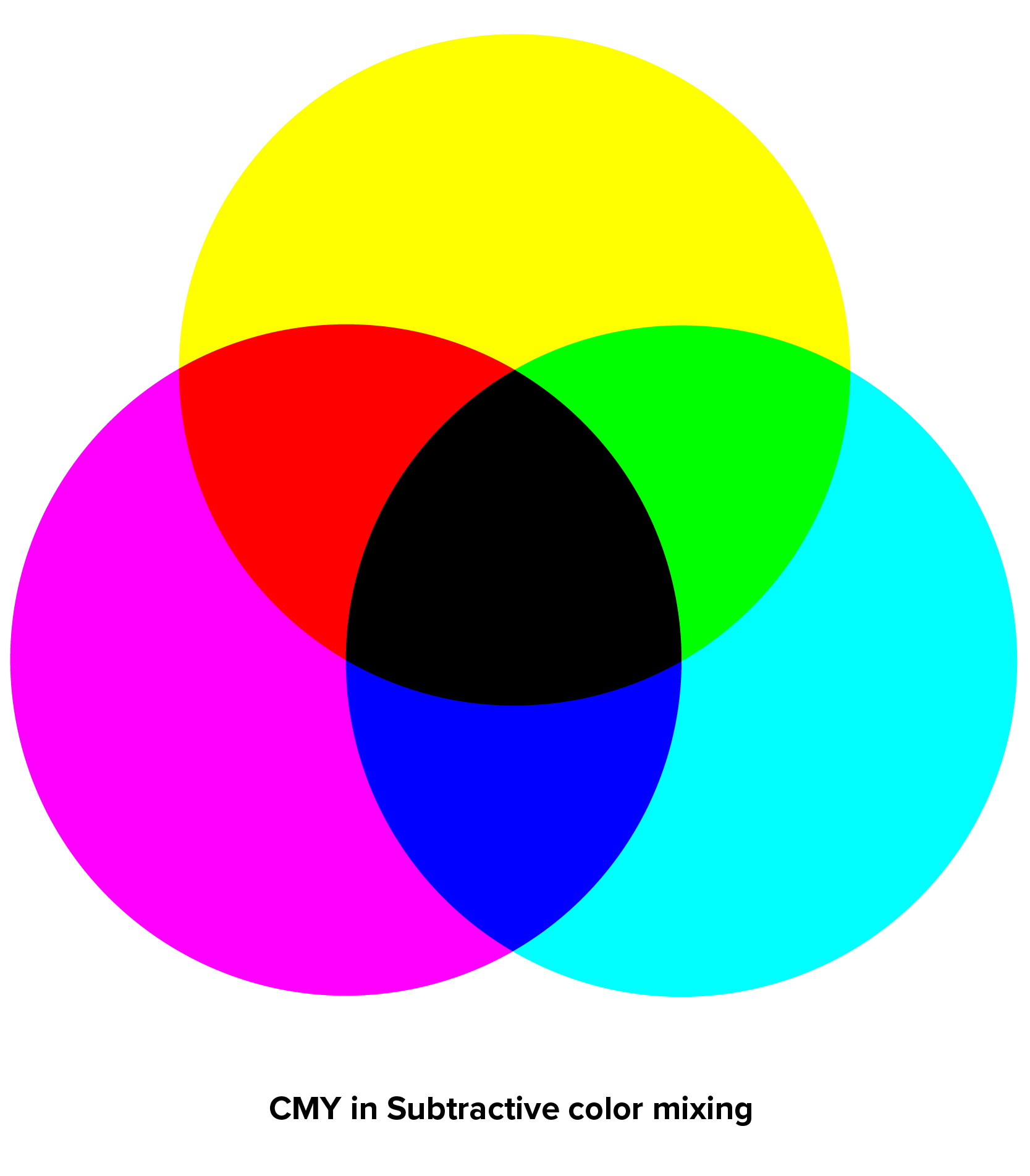Amber White Light
Looking at my lamp now and thinking back to my original concept of the moth flying close to the flame effect, I thought I had completely lost and given on that idea.
But looking at my lamp, I can sort of feel the continuity of flow and movement of the acrylic melting. Experimenting and manipulating the materials physical properties from itsown state from hard to liquid and have the power to pause on these properties fascinates me.
I know that I should not show the bare source of the light source since I’m using the clear light bulb too. But I thought that I could position the light bulb at the right location where there is alot of acylic creases melted to one place so there would be less glare. I was close though, but not close enough. I will change to the translucent light bulb and see how it looks
Will keep you updated.

